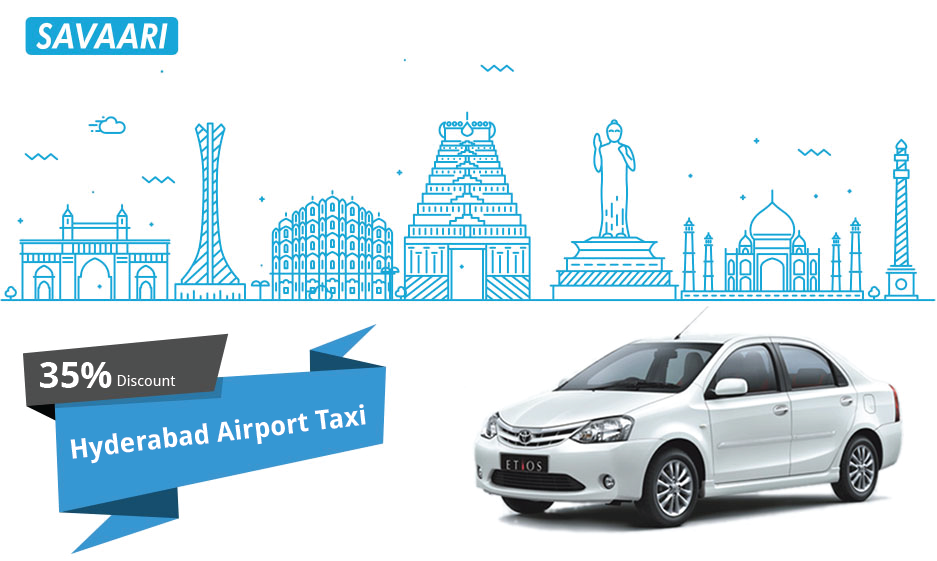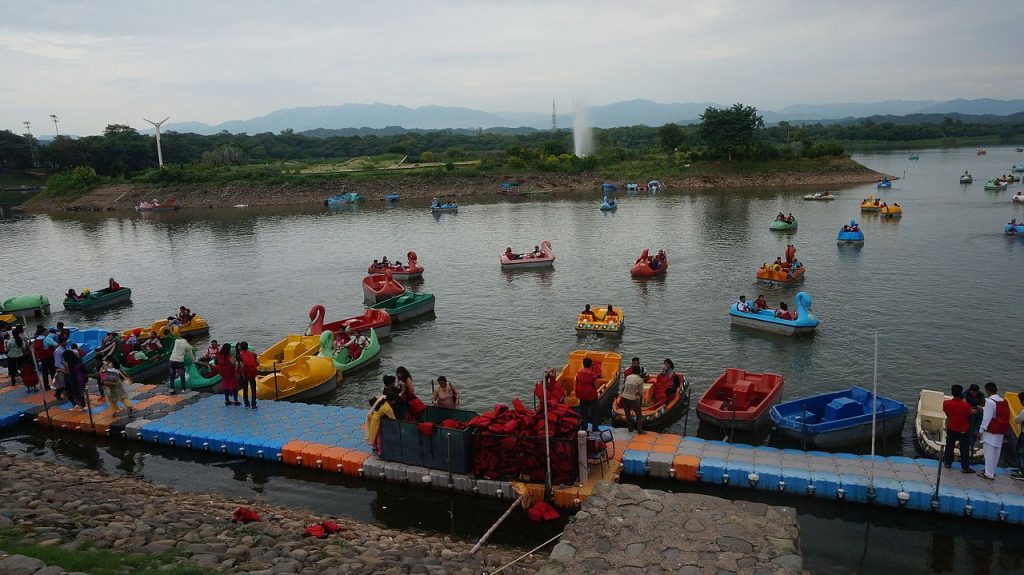Humans have always tried to explode the boundaries of the unknown. The desire to wander probably stems from our nomadic roots. During the age of Romanticism, this genetic tendency was ignored in favour of another theory – the “hope” that travel will bring about a transformation in the self, or, effect a change in the state of things as they stand.
These days, travelling is a means to an end – an easy way to populate our Instagram feeds and Facebook posts, marking the decline of travel in the romantic tradition and the advent of another archetype- the hyper-consumerist, socially savvy, soulless automaton, who merely exists for validation. “Look here, see what I have accomplished…here are the cobbled streets of Europe, and here are the spires of Istanbul. I have neither earned the right to be here nor do I have the mental capacity to even truly comprehend what I am seeing. Instead, I will copy paste a quote, add a few hashtags and everybody will compliment me on how I look.” This is, ironically, the state of travel today.
Historically speaking, whether rain or shine, we have sailed the oceans. Now years later, we fly over them with perhaps slightly different aspirations and motivations behind our travels.
Travel is food for the soul. And it was this very same desire to find something greener on the other side that drove humans beyond the blue yonder. And all of it is much easier now, given how smaller the world has become! All of the world’s iconic monuments are just a few hours from any part of the world.
But world travel comes at a cost! It costs us our ancestral lands, 4 cows, 2 bulls, continuous praying to the god of goats, dragon blood and a few sacks of onions. In simple human language, world travel is definitely expensive. But sometimes what we seek outside has always been right in front of us, but we hardly ever notice (some Alchemist reference here).
There is no denying that the world is full of wonders. And these incredible places, monuments and vistas deserve to be visited, consumed, and digested. Speaking of iconic structures, we cannot stop admiring the gorgeous Trakai Castle in Lithuania. Like other European countries, Lithuania is home to some ridiculously spectacular medieval castles and some of these castles are at least 900 years old.
However, while we were admiring the beauty of Trakai Castles, we recalled something quite similar back home. Still not very high on the popularity charts, Jal Mahal in Jaipur is a truly unique palace. Like the Trakai Castle, this palace too stands in the middle of a water body and has more to it than meets the eye.
Of course, comparing the two structures would be quite silly and absurd since the two offer significantly different experiences. While one will take you back in time to the middle ages and give you a wholesome idea of what life was like back then, the other will probably leave you confused and intrigued at the same time! While one looks like it was plucked straight out of a fairytale, the other might quite possibly not even figure in your itinerary. But here’s why you should visit the Jal Mahal- It is very different from the other palaces and forts in the vicinity, it is quite unique insofar as the majority of the palace is underwater most of the year and if you are someone who loves mysteries and forgotten structures, the Jal Mahal exudes gothic atmosphere and is quite the perfect destination.
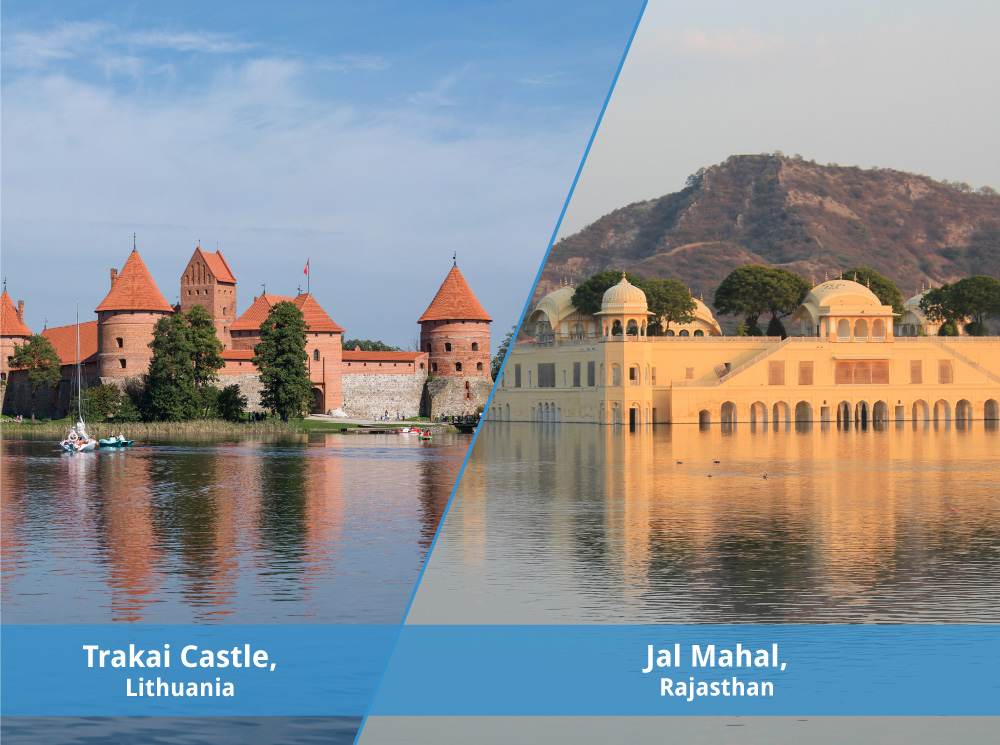
Trakai Castle in Lithuania
Rising from the deep waters of Lake Galve, this gothic castle is one of Lithuania’s most beautiful and treasured sights. Only 28km from Vilnius and spread along a 2km-long peninsula, Trakai makes for a great day trip, replete with history.
Two small bridges conveniently connect the island to the mainland. Here’s how it looks on a bright sunny day.
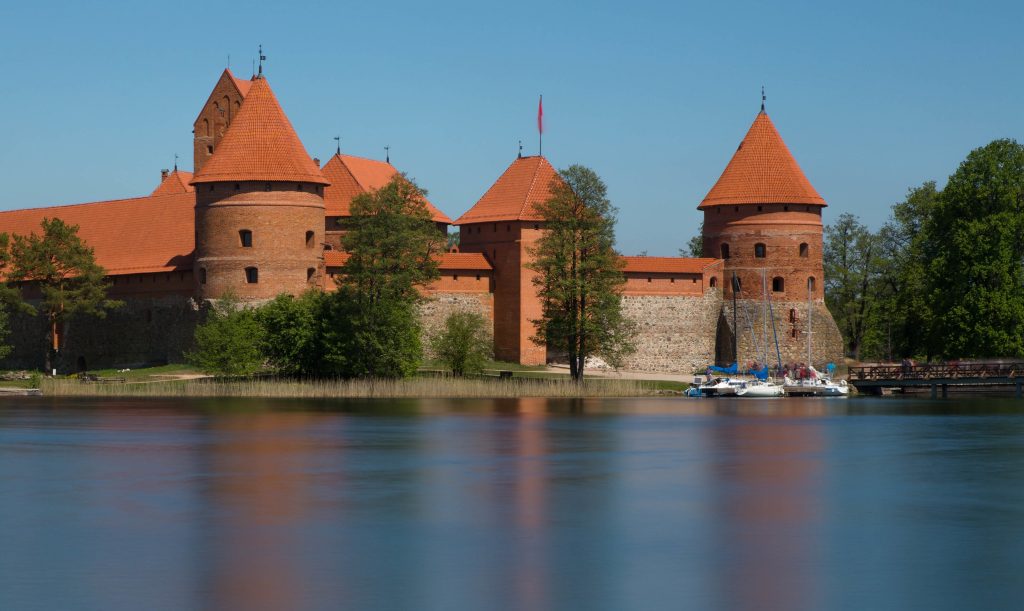
The red brick walls rise up from the blue waters of the lake and reach out to the infinite sky. If you really want to take home a 360-degree view of the castle, we suggest you rent a boat that will take you around the lake and allow you to admire the castle from all sides!
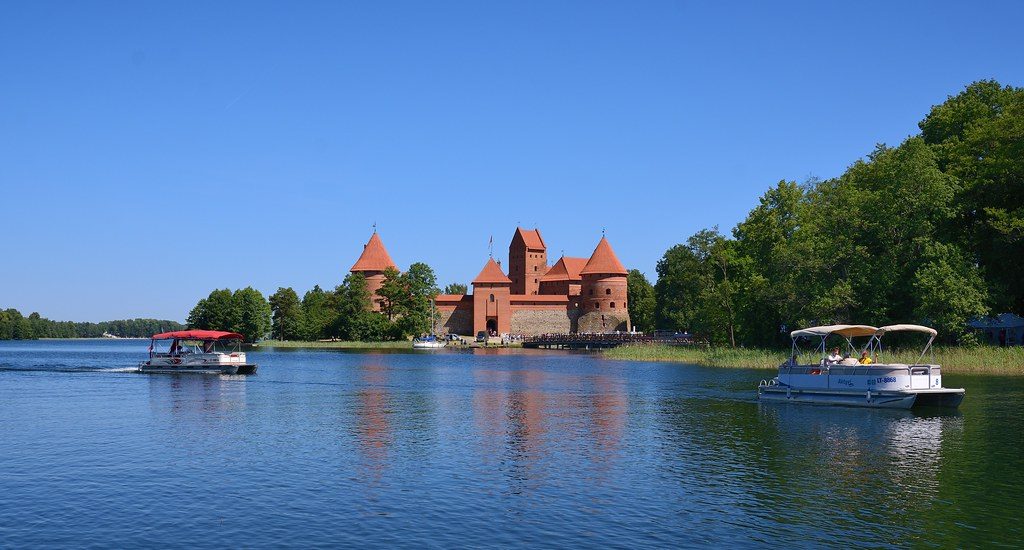
Even though most parts of the Trakai castle have been reconstructed over the years, the aesthetic remains the same. The rooms in the castle, to this day, give an insight into the life of the royals throughout the ages – everything has been well preserved. From furniture, bed linens, coins, weapons to jewels! Spend some time at the chapel. You will admire the ceilings there.
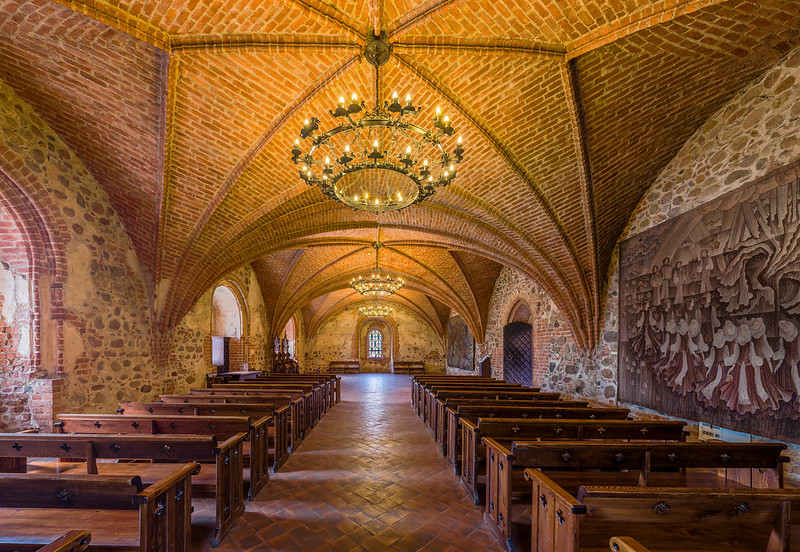
The place holds a different charm during the deepest winters when the lake freezes and snow covers the castle and nature alike in pristine whiteness. The charm as well as historical significance of the castle makes it a mandatory entry on your bucket list.
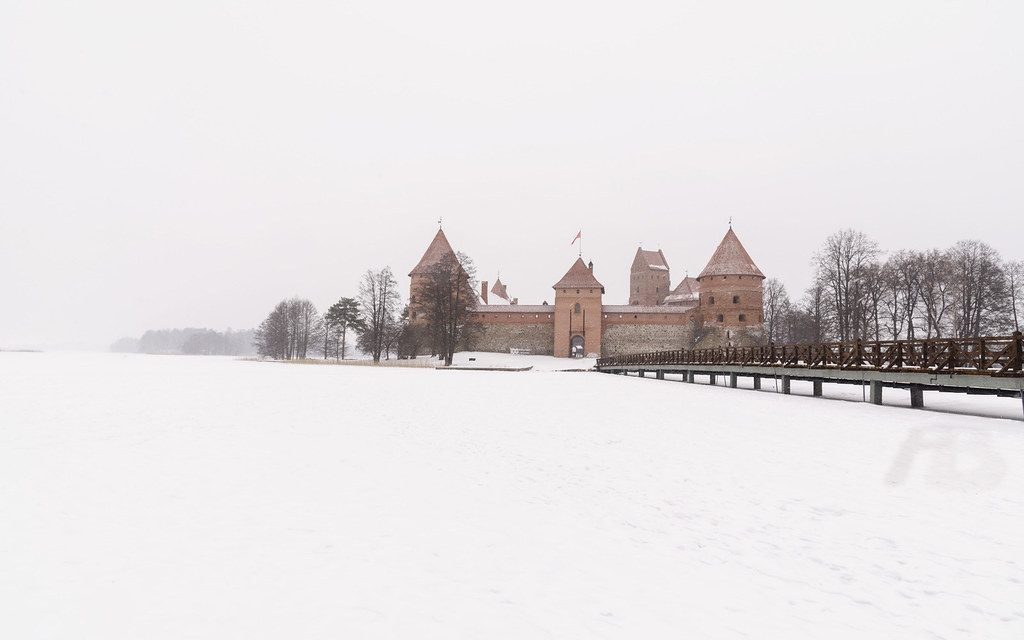
Jal Mahal Palace
Built as a hunting lodge for the Rajput Kings, Jal Mahal was never meant to be a palace. Also, the palace, unlike other water palaces, was not built on an island. So what really happened here?
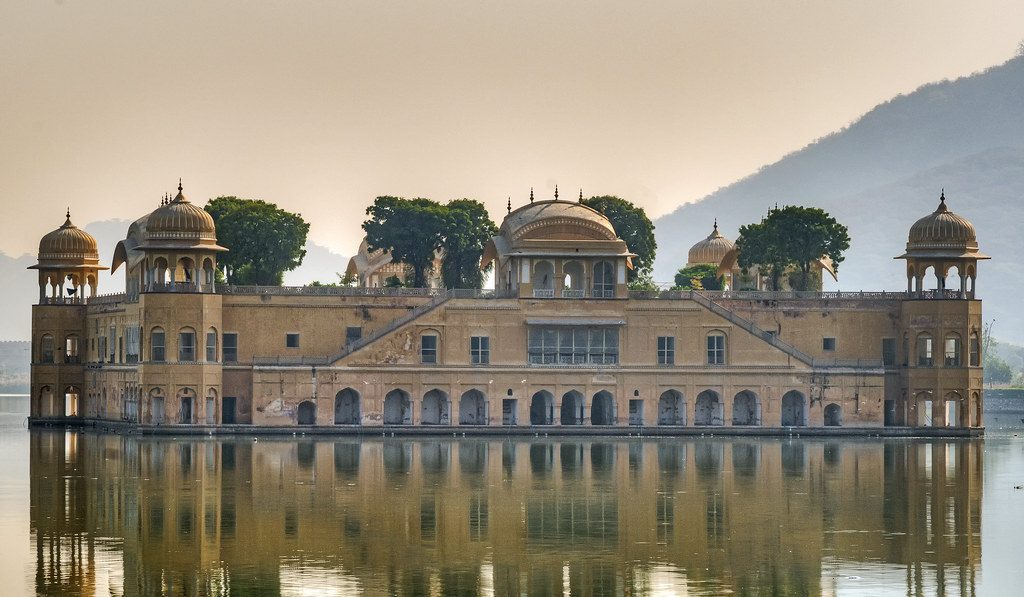
A few facts below –
- Jal Mahal was built during severe drought conditions when the lake had completely dried out.
- The palace was made of stones with walls so strong that it still does not allow water to seep through.
- Later, struggling to combat the drought conditions, locals turned it into a water reservoir, submerging three parts of the palace underwater. To this day, only the top floor of the five-storeyed palace is visible to the tourists.
- Earlier tourists were allowed to access the palace through gondolas, but due to legal reasons, gondola rides stopped about three years ago.
Architecture and more!
The first thing you notice when you stand on the lake edge is the submerged palace, which leaves you with mixed feelings. The second thing you cannot ignore is the Rajputana architecture, exuding elegance and suggesting sheer brilliance. Made entirely of red sandstone, the palace is believed to have been built with traditional building materials such as mortar, lime sand and surkhi mixed with jaggery, guggal and methi powder. No wonder, the palace still stands intact to this day, even underwater!
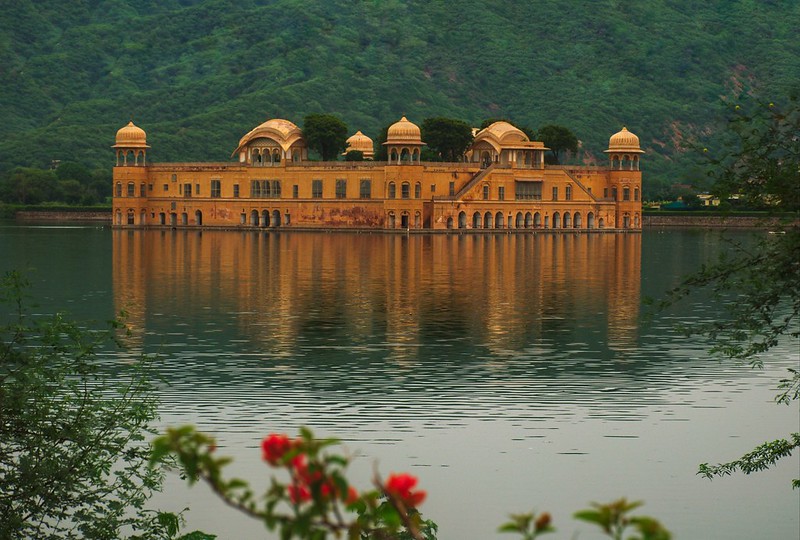
Though one can only admire the palace from the edge of the lake, Jal Mahal has a very overwhelming and over-powering vibe around it. You find yourself wondering what those corridors could be holding? If abandoned, then why submerged? How could the drought conditions years ago force villagers to turn this dried out lake into an artificial reservoir? Now a 15 feet deep lake, it is quite baffling when one connects the dots. And no matter how hard you want to make sense of what’s floating in front of you, you cannot!
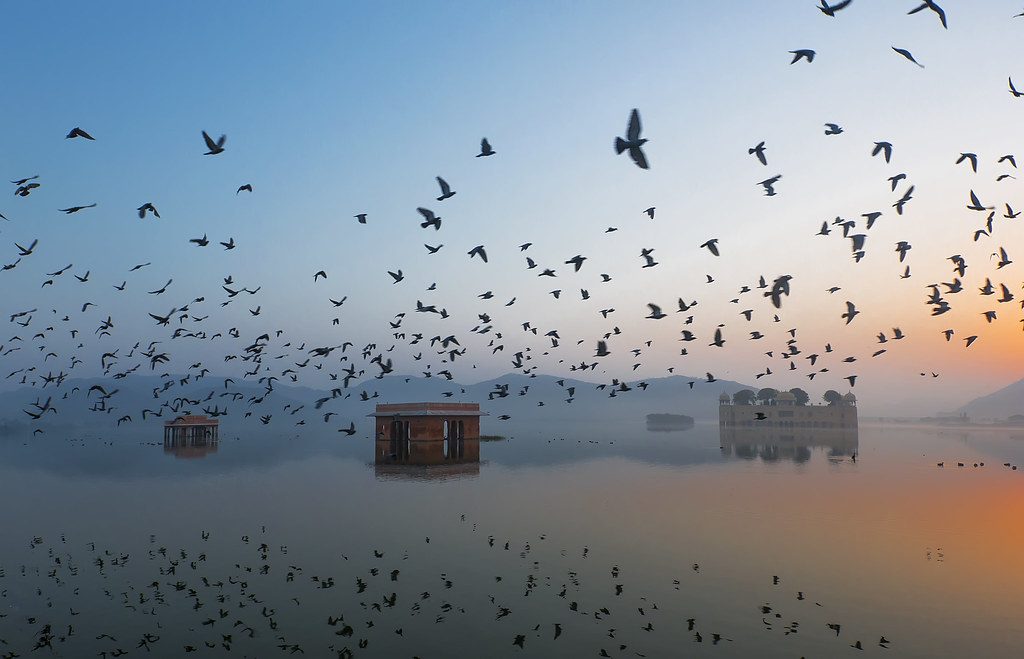
Rajasthan is a land of many mysteries and wonders. Only 4 km from the city of Jaipur, Jal Mahal should definitely be in your itinerary the next time you are in Rajasthan. Book a Delhi to Jaipur Savaari cab or hire a car on rent in Jaipur and set out to make sense of the riddles and mysteries around the monuments in the Pink City.
Last Updated on March 20, 2023 by Swapnil Kachhawa



